-
“Fresh produce is healthier than frozen”
In actual fact frozen vegetables can be heathier than fresh! Produce is often snap frozen very soon after they are picked and this ‘freezes’ all the nutrients along with it. On the other hand fresh vegetables can lose some of their nutrient value on its way from the field to the supermarket shelf. Water soluble vitamins such as vitamin C and B’s tend to deplete the longer the veges are around for. However, both fresh and frozen veges provide us with a quality amount of nutrients and it is actually the method of cooking which will make the greatest difference in nutrient content. Boiling veges in water for a long period of time lets the vitamins and minerals seep out into the water. Regardless of whether you’re using fresh or frozen veges, in order to retain the most nutrients cook veges in as little water and for as little time as possible. Steaming, microwaving, stir-frying, and roasting are much better options than boiling when it comes retaining those nutrients.
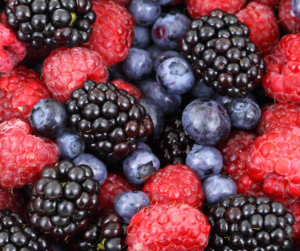
-
“Eating carbs will make me fat”
Our bodies preferred source of fuel is glucose – which comes from eating carbs. We need carbs in order to have the energy to carry out our day to day activities. Cutting out all carbs can lead to low energy levels, feeling moody, and unmotivated. What we want to do is focus on the types of carbs we are consuming. It is the simple carbs which can cause us to gain weight. Simple carbs are highly processed and include: White bread/rice/pasta, chips, crackers, cakes, biscuits etc. In these types of carbs the outside layer of the grain has been removed, which contains fibre and protein. This results in your blood sugar levels spiking and lowering rapidly, often referred to as a ‘sugar crash’ which results in our hunger levels being out of whack thus effecting our weight. Simple carbs are also often packed with extra sugar and calories. Complex carbs on the other hand include: Wholegrain bread/rice/pasta/wraps, oats, legumes, sweet potato, fruits and veges. These result in a steady increase in blood sugar which keeps us fuller for longer and our hunger levels regulated. However, as with all foods everything should be eaten in moderation. Complex carbs should make up a quarter of your plate, and remember to always include a healthy source of protein and fat in each meal. Also do not deprive yourself of a treat every now and then to keep those cravings satisfied, but keep it as just that, a once-in-a-while treat.
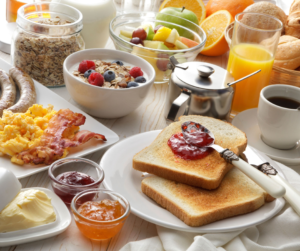
-
“Snacking is bad”
Short answer is if you are hungry eat! Having a snack between meals can be a good way to prevent that mid-afternoon energy crash and prevent you from becoming ravenously hungry just before dinner. The important part is not when you’re eating it is what you are eating. Rather than chips and biscuits, choose a snack with protein and healthy fats to keep you satiated. For example: Apple and nut butter, cheese and meat whole grain bread sandwich, tuna and avocado, carrots and hummus etc. Keep portable snacks with you when you’re out and about such as hard boiled eggs or nuts. If you find yourself in an environment where mindless snacking is occurring such as a social event, bring with you the healthiest option feasible and stay hydrated to prevent hunger mistaken for thirst.
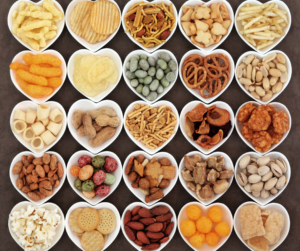
-
“Juices and smoothies are healthy”
Many people believe juice is a great way to get in the health benefits of fruit. However, juice could not be more far from healthy. The flesh of the fruit has been removed thus leaving it with no fibre – a nutrient that helps you feel fuller for longer, regulates blood sugar, and keeps our digestive system healthy. A lot of juices are packed with extra sugar making their sugar content comparable if not higher than a lot of fizzy drinks. This high sugar content packs in the extra calories and in the absence of fibre will cause a huge blood sugar spike. It is best to stick to whole fruit as it is more filling and contains much more nutritional benefits, but if you must have juice try to dilute it with water.
Smoothies are also popular and believed to be a great way to consume healthy fruits and veg. Because the fibre of the fruit is not lost in smoothies they are already a better option than juice. However it ultimately depends what goes in the smoothie that makes it ‘healthy’ or not. It can be all too easy to pack an orange, apple, berries, honey, and a banana all into one easy to drink smoothie. But would you usually eat all this fruit in one siting? If you are adding in all this fruit, the calorie content can easily creep up to be very unnecessarily high. The key to smoothies is to just use a small amount of fruit, for example, half a banana and a handful of berries or half a banana, and add a source of protein such as Greek yogurt to keep you fuller for longer. Avoid added sugars such as honey, ice-cream, and sorbets.
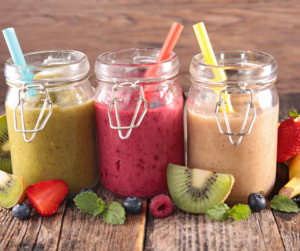
-
“Potatoes are bad for me”
Potatoes are actually a superfood! They offer a huge range of nutrients including vitamins C, B6, and B3, potassium, magnesium, iron, folate, and fibre. It is also important to note that potato skins contain a great amount of the vitamins and nutrients so peeling potatoes before cooking can significantly reduce their nutrient content. Potatoes also generally have a high GI so keeping the skin on increases fibre content and consuming a source of protein simultaneously will reduce the effect on blood sugar. The best way to prepare potatoes are boiling, mashed with only a dash of milk, or roasted with just a drizzle of olive oil. When potatoes are processed into the form of fries, chips, hash browns etc. the calorie content goes through the roof due to the excess oil, and the nutrients become diminished.
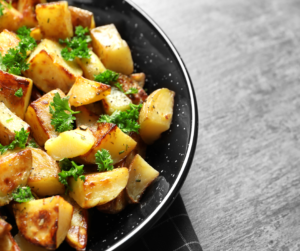
“Located in Albany on the North Shore, Fitness HQ is the gym for Women. We run over 20+ group fitness classes as well as providing a safe comfortable space for ladies to work out in our main 24/7 gym”
